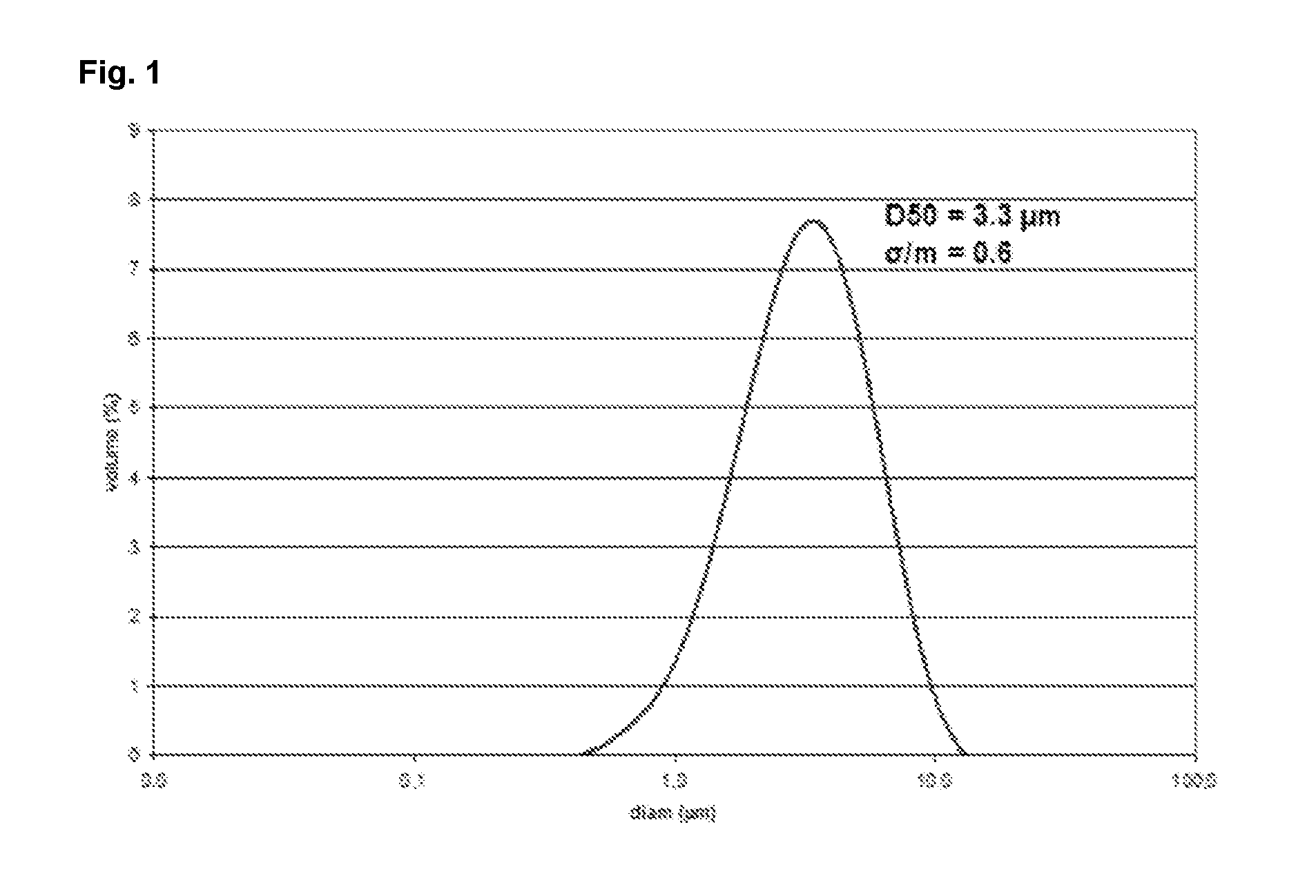Luminescent composite comprising a polymer and a luminophore and use of this composite in a photovoltaic cell
- Summary
- Abstract
- Description
- Claims
- Application Information
AI Technical Summary
Benefits of technology
Problems solved by technology
Method used
Image
Examples
example 1
[0116]Preparation of the Phosphor
[0117]Use is made, in this example, of a phosphor as described in example 1 of application WO 2009 / 115435 and of formula Ba0.9Eu0.1MgAl10O17. The product used here is the powder obtained after drying, in an oven and at 60° C., of the suspension which was obtained at the end of the wet grinding step described in this example 1. In the preparation of this phosphor, no flux such as MgF2 was used.
[0118]The mean size of the product measured by laser diffraction is 140 μm. The dispersion σ / m is 0.6.
[0119]The size of the coherent domain calculated from the diffraction line corresponding to the [102] plane is 101 nm. Hence a d50 measurement value / XRD measurement value equal to 140 / 101=1.386. It is observed that the value of d50 (laser) and that of the size of the coherent domain (XRD) have the same order of magnitude, which confirms the single-crystal character of the particles.
[0120]The phosphor has an absorption of at most 8% in the range of wavelengths be...
example 2
[0142]Use of the barium aluminate (0.5%) having the following characteristics: QE=100% (at λexc of 380 nm); d50=6.5 μm. This aluminate was obtained using a flux of MgF2 unlike the aluminate from example 1. This aluminate corresponds to the product referred to as the reference product in the measurement of QE as was described on page
PUM
| Property | Measurement | Unit |
|---|---|---|
| Length | aaaaa | aaaaa |
| Fraction | aaaaa | aaaaa |
| Fraction | aaaaa | aaaaa |
Abstract
Description
Claims
Application Information
 Login to View More
Login to View More - R&D
- Intellectual Property
- Life Sciences
- Materials
- Tech Scout
- Unparalleled Data Quality
- Higher Quality Content
- 60% Fewer Hallucinations
Browse by: Latest US Patents, China's latest patents, Technical Efficacy Thesaurus, Application Domain, Technology Topic, Popular Technical Reports.
© 2025 PatSnap. All rights reserved.Legal|Privacy policy|Modern Slavery Act Transparency Statement|Sitemap|About US| Contact US: help@patsnap.com

